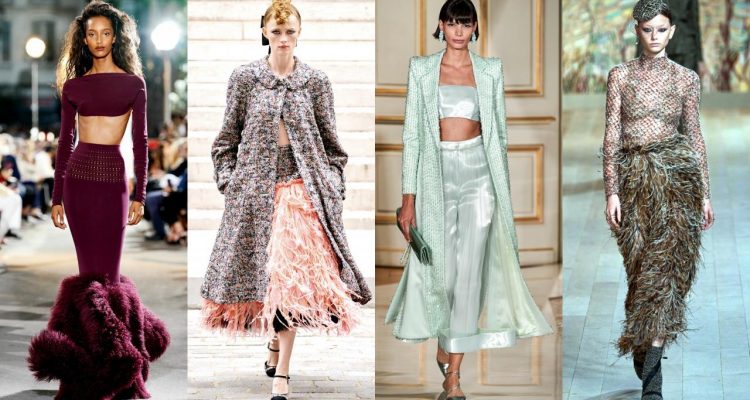
Introduction
Haute couture, the epitome of luxury and craftsmanship, has a rich and storied history that has shaped the world of fashion as we know it today. From its origins in 19th-century Paris to its global influence in the modern era, haute couture continues to captivate fashion enthusiasts around the world. In this article, we will embark on a journey through the annals of fashion history, exploring the evolution of haute couture and its enduring impact on the industry.
Origins of Haute Couture: A Glimpse into the Past
The birth of haute couture can be traced back to the mid-19th century in Paris, France. Renowned fashion designer Charles Frederick Worth is widely recognized as the father of haute couture. Worth revolutionized the industry by introducing a system of presenting his designs on live models and creating exclusive garments tailored to individual clients. This marked a significant departure from the prevailing practice of anonymous dressmaking.
The Golden Age of Haute Couture: A Flourishing Era
In the early 20th century, haute couture reached its zenith, captivating the world with its exquisite craftsmanship and unparalleled luxury. Paris became the undisputed fashion capital, attracting elite clientele from around the globe. Design houses such as Chanel, Dior, and Balenciaga emerged during this period, leaving an indelible mark on the fashion landscape.
The Influence of Haute Couture in Popular Culture
Haute couture has always had a profound influence on popular culture, transcending the confines of the fashion industry. From iconic red carpet moments to influential film and music, haute couture has shaped trends and inspired generations. Celebrities, including Audrey Hepburn, Grace Kelly, and Rihanna, have become synonymous with haute couture, showcasing its transformative power and elegance.
As Audrey Hepburn once said, “Elegance is the only beauty that never fades.” This sentiment perfectly encapsulates the timeless allure of haute couture. The meticulous craftsmanship, attention to detail, and exclusive nature of these garments continue to capture the imagination of fashion enthusiasts and aficionados alike.
Technological Innovations in Haute Couture
While steeped in tradition, haute couture has also embraced technological advancements to enhance its creative processes and expand its reach. In recent years, 3D printing, virtual reality, and digital design have all found their place within the world of haute couture.
Designers such as Iris van Herpen have pushed the boundaries of traditional couture by integrating 3D-printed elements into their collections. These innovative techniques allow for the creation of intricate and avant-garde designs that were previously unimaginable.
Virtual reality has also played a role in enhancing the couture experience. Fashion houses now offer virtual tours, allowing audiences to immerse themselves in the world of haute couture from the comfort of their own homes. This level of accessibility has opened up new avenues for engagement and exploration.
Preserving Fashion Heritage: Museums and Exhibitions
Museums and exhibitions play a crucial role in preserving and celebrating the rich history of haute couture. Institutions such as the Costume Institute at the Metropolitan Museum of Art in New York City and the Musée de la Mode in Paris curate exhibitions that showcase iconic couture pieces, paying homage to the designers and artisans who have shaped the industry.
These exhibitions not only educate visitors about the evolution of fashion but also provide a source of inspiration for current and future designers. They serve as a reminder of the enduring legacy of haute couture and its continued relevance in a rapidly changing world.
The Future of Haute Couture: Sustainability and Inclusivity
As the fashion industry grapples with the challenges of sustainability and inclusivity, haute couture has a unique opportunity to lead by example. Designers are increasingly incorporating ethical and sustainable practices into their collections, prioritizing the use of organic and recycled materials. This shift towards conscious couture reflects a broader movement within the industry towards a more responsible and inclusive future.
Conclusion
Tracing the history of haute couture is like embarking on a journey through time, exploring the evolution of fashion and witnessing the transformative power of creativity. From its humble beginnings to its current global influence, haute couture remains an emblem of luxury, craftsmanship, and innovation.
As fashion continues to evolve, embracing technology and championing sustainability, haute couture serves as a testament to the enduring allure of timeless elegance. Through museums, exhibitions, and the creative genius of designers, the legacy of haute couture is preserved, inspiring future generations to continue pushing the boundaries of fashion.
In the words of Coco Chanel, “Fashion fades, only style remains the same.” Haute couture, with its rich heritage and unwavering commitment to artistry, will forever be a symbol of enduring style and timeless beauty.

